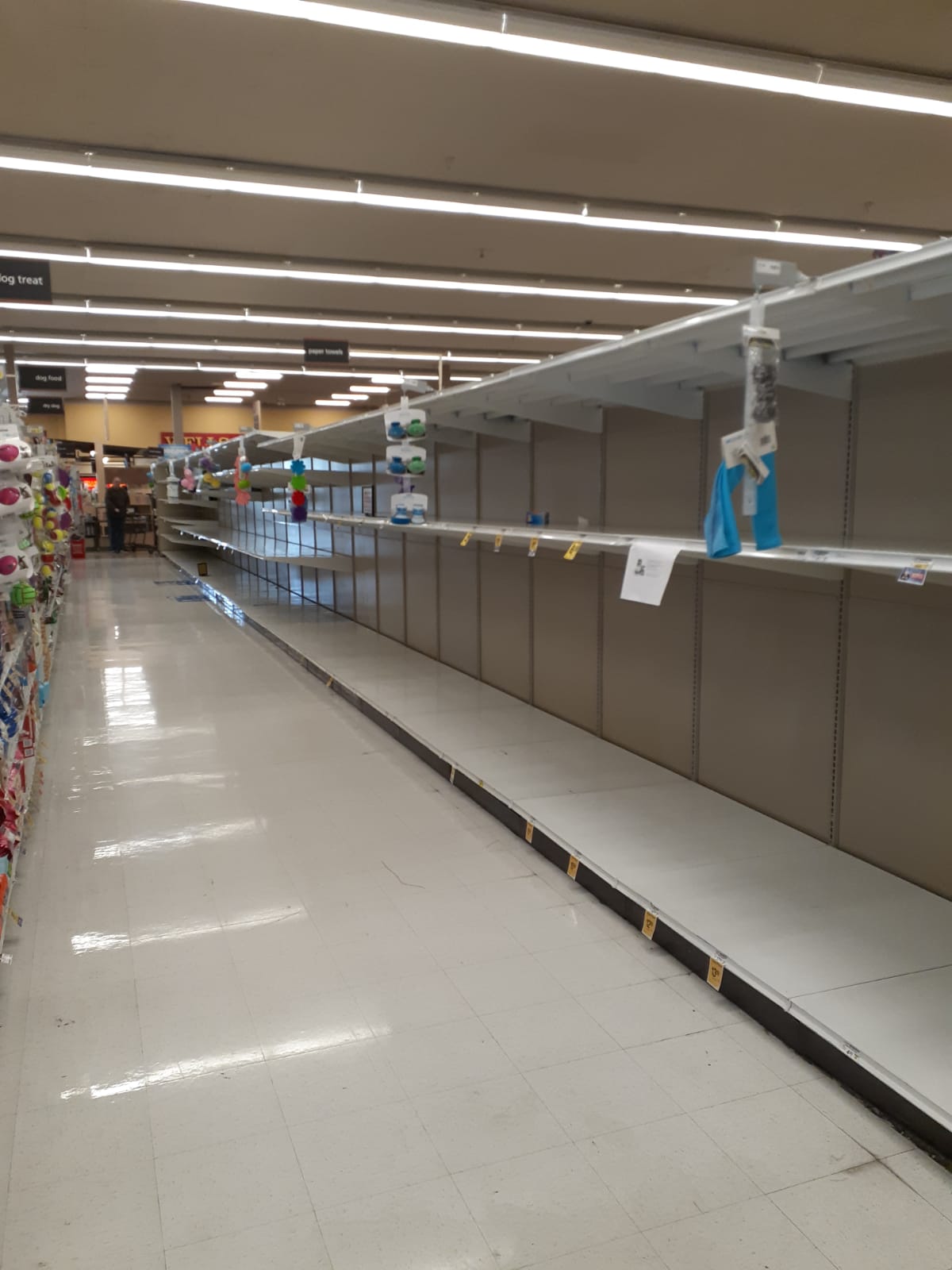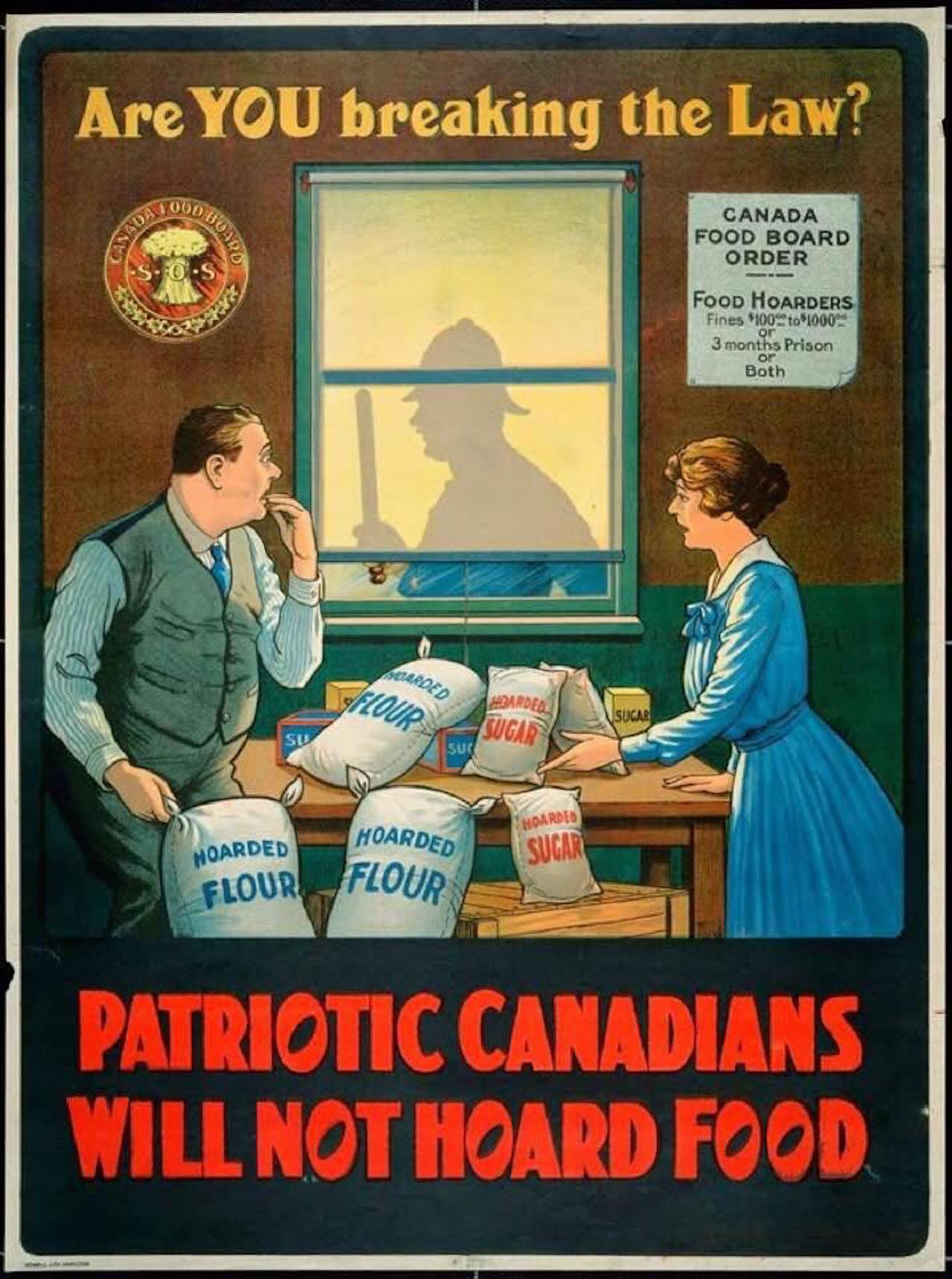Surviving the COVID-19 Coronavirus Quarantine by Stocking up in Bulk

A stocked up pantry with bulk products is a great way to prepare for the COVID-19 Coronavirus mandated shelter-in-place orders. Lines to enter the grocery store and cleared shelves are too common a sight. Rationed toilet paper is probably the larger headline grabbers for this pandemic, but I would argue not the most necessary. Food has fewer substitutes than toilet paper. Toilet paper can be replaced with rags, newspapers, baby wipes, a bidet, a shower, or even leaves if nothing else. If you’re not eating, you won’t need the toilet paper anyways. Let’s learn how rationing food was observed during World War I, and what are the best bulk products to keep stock of for the shelter-in-place mandate.
Using History as a Guide
A first step for any disaster is to remain calm, informed and focus on what you actually have and how long that can last. One of the reasons the toilet paper calculator is so great is that it shows you a realistic perspective of how long your toilet paper actually lasts. The same can be true for food in your pantry. Get creative and be realistic based on actual recipes. Past times of war dealt with rationing with some similar themes to the current conditions.
Circa 1916, Canada produced a 39 page, info-packed, booklet during WWI that had some worthwhile points for repeating. The Win-The-War Suggestions and Recipes booklet breaks food down into four classes on page 6:
“(1) Fats, which turn into fat and make heat and energy - found in potatoes, bread, sugar, honey, syrup, butter, dripping and meat fat. (2) Those that form muscle–fish, lean meat, eggs, skim-milk, cheese, brown bread, beans, peas, lentils. (3) Those needed for bone, most necessary for all children–milk, fruit, vegetables, brown bread and oatmeal. (4) To keep the body in a proper condition, laxatives are absolutely necessary, and are best supplied by apples, prunes, figs and other fruits and green vegetables.”
The booklet is filled with recipes written from experience and food substitutes that are sure to help make the most of what you have. Starting on Page 34, general ration suggestions give some clue to how important it was to conserve.
“17.Careless cooks should take much more pains and cook better. An economical dish should not be blamed for short-comings when it is the fault of the cooking.”

Some suggestions get extreme with buying in bulk or how to go to bed happy after an “average” meal.
“19. Large families can buy a whole or part a carcass, far cheaper than meat at the butcher’s. Or several families who want to do their bit can join. The meat will keep frozen till used up.”
“25. By having a plain dinner and good pudding, or vice versa, you can make a good average when your menu is rather sketchy.”
The booklet acknowledges the extremeness of these suggestions saying: “there is no doubt that these suggestions are rather bothersome, and carrying them out will take a little more time.” and admitting the recipes are “.. not meant to be recipes de lux”. The no-BS and direct message in this booklet can help make a typical bulk purchase last seasons.
Top Bulk Items to Stock up on for a Quarantine
Purchasing products in bulk helps reduce a last-minute panic to buy what you need. This is why one of the positive bulkernalities of buying in bulk is “Emergency Preparedness” and “Fewer Trips”. Emergencies include earthquakes, tornados or shelter-in-place quarantines. A freezer stocked with single-person frozen meals might feel emergency ready but the disaster might last longer than anticipated. For this reason, it’s important to stock up on non-perishable bulk ingredients that are flexible to create a variety of meals.
Non-Perishable Essential Food Ingredients
- Dried beans, rice, lentils, nuts
- Flour, salt, pepper, sugar, spices, yeast, oil
- Powdered milk, peanut butter, oatmeal
Personal Hygiene and Cleaning Supplies
- Soap, Purell hand sanitizer, wipes, toilet paper
- Clothes Detergent, bleach, dish soap, swiffer sweepers, disinfecting wipes, dishwasher detergent, peroxide, toothpaste, trash bags.
Sick Preparedness Supplies
- Tea, honey, canned soup, pedialyte, gatorade, Airborne, Emergen-C, Over the Counter Medicine (such as cough syrup or tums), prescription medicine
- Tissues, latex gloves, masks, thermometer, first aid kit
Additional Emergency Preparedness Products
You can never be too prepared for disasters or emergencies. Some additional items for consideration to have on hand for any type of emergency.
- Water, gasoline in the car, batteries, flashlight, hand cranked radio, manual can opener, propane, bbq, lighters, any camping cooking equipment, foil, whistle, solar cell phone charger
For a Quarantine, a 14-day to 30-day supply of food for every person in your household is ideal. Restocking as necessary to keep that buffer. Using the WWI rationing techniques a nimble 5-day supply can turn into a 14-day supply much easier. It won’t be easy, but it is possible.
In the comments, what items do you think are absolutely necessary to be emergency ready?